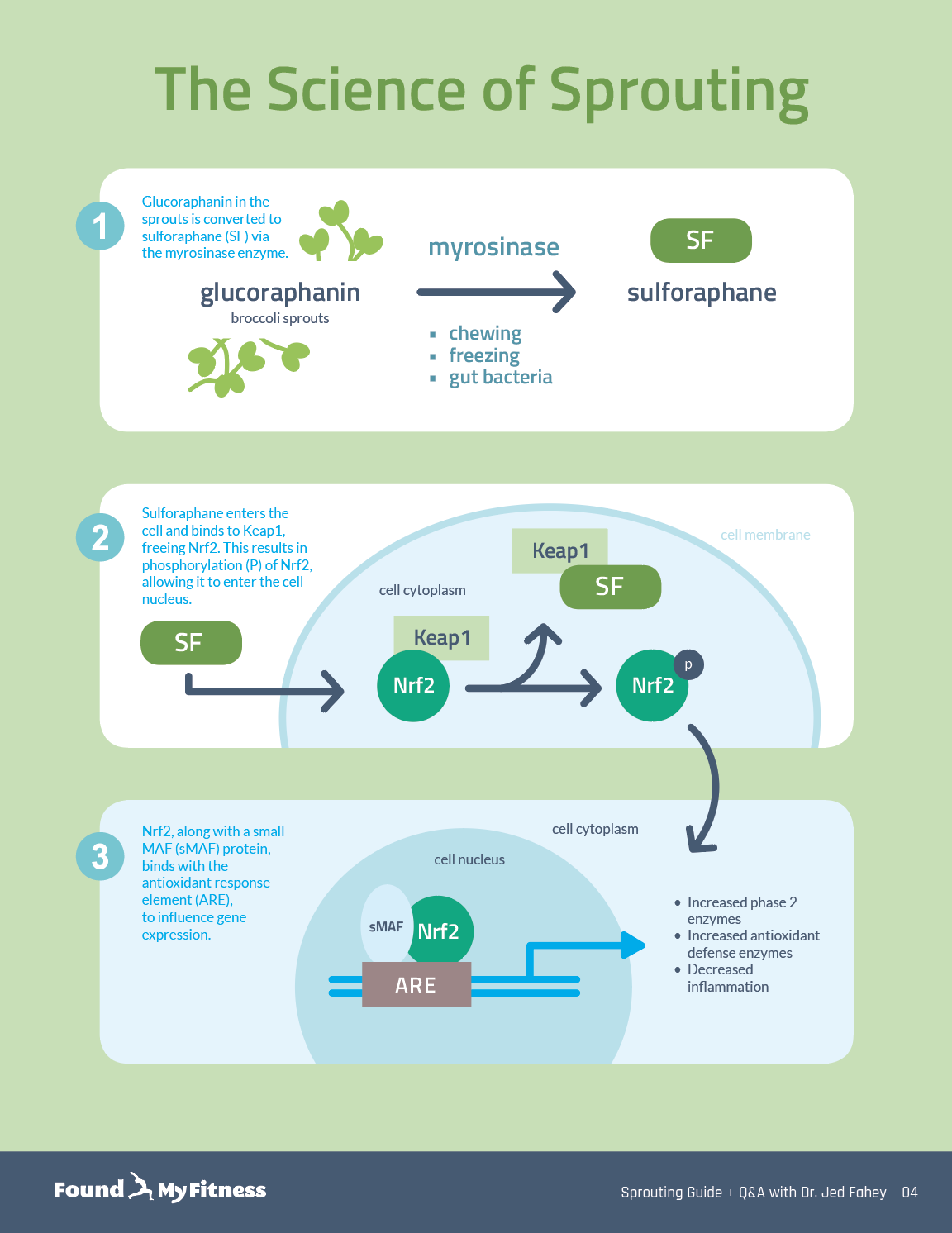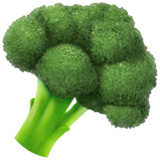How freezing and freeze drying affects myrosinase in broccoli sprouts | Jed Fahey
Enter your email to get our 15-page guide to sprouting broccoli and learn about the science of chemoprotective compount sulforaphane.
Broccoli sprouts are concentrated sources of sulforaphane, a type of isothiocyanate. Damaging broccoli sprouts – when chewing, chopping, or freezing – triggers an enzymatic reaction in the tiny plants that produces sulforaphane.

Get the full length version of this episode as a podcast.
This episode will make a great companion for a long drive.
Freezing and freeze-drying broccoli sprouts damage the plants' cell walls to yield the isothiocyanate sulforaphane. But these processes can either enhance or hinder optimal sulforaphane production from the sprouts. The key is timing: Whereas immediate use of the frozen sprouts enhances sulforaphane production, thawing hinders it. Similarly, freeze-drying requires careful avoidance of the thawing stage. In this clip, Dr. Jed Fahey describes the effects of freezing and freeze-drying of broccoli sprouts on sulforaphane production.
Jed: Well, if you eat fresh sprouts, they're fine. Oh, you mentioned that your freeze broccoli sprouts.
Rhonda: I wanted to ask you about that.
Jed: So as you freeze them, this is interesting, you freeze them, you take them out of the freezer. If you put them in a blender and make a smoothie right away, then the myrosinase is going to act in that liquid, and so you're going to be getting plenty of sulforaphane, I think. If you let those sprouts thaw out, there's a bunch of juice that's going to run out. They're going to look like a slimy mess, right? So, by the time you see that juice and either pour it off, or pour it in your container, probably most of the myrosinase activity has occurred and sulforaphane has probably started to bind to proteins and macromolecules in that vegetable mess. And because what happens is when you freeze the plant tissue, when you thaw the plant tissue, I guess, you've broken down all the cell, many of the cells. So the lignin, the structure on the outside of the plant cells is still there, but the cells are trashed.
Rhonda: Is that why freezing increases sulforaphane, it's just breaking it?
Jed: Well, ice crystals are forming, yeah, it allows the enzyme and the substrate to come into contact, form sulforaphane. So it's probably okay, but you have to capture all the juice or the easiest thing is just throw it in the blender right away, which is probably what you do. But it's interesting because friends in industry, and in fact, we were wrestling with this. We have a freeze dryer. We have a beautiful freeze dryer that we were actually given by a Japanese sprout company as sort of thanks for what we've done that allowed them to build a business in broccoli sprouts. And this freeze dryer has trays. And you can put, say, five pounds of sprouts on the trays. But what you have to do is you have to freeze the sprouts first and then put them in the freeze dryer, pull a vacuum, and it winds up pulling off all the moisture. If you stick the trays in a freezer and freeze them and then move them into the freeze dryer, basically what you've done is allowed all the cells to break the thaw as you're pulling a vacuum. And when we looked at those freeze-dried sprouts, they had no glucoraphanin, and no myrosinase, and no sulforaphane to speak of because it had all reacted and then it was just a mess. So there is value in thinking a little bit about how that enzyme behaves before you start making a thing. You can actually freeze-dry broccoli sprouts very nicely as long as you deep freeze them, or quick freeze them and maintain them in a frozen state when you go to dry them.
Rhonda: And that will retain the sulforaphane. The myrosinase.
Jed: The myrosinase is not coming in contact with the glucosinolate then.
Rhonda: Okay.
Any of a group of complex proteins or conjugated proteins that are produced by living cells and act as catalyst in specific biochemical reactions.
A glucosinolate (see definition) found in certain cruciferous vegetables, including broccoli, Brussels sprouts, and mustard. Glucoraphanin is hydrolyzed by the enzyme myrosinase to produce sulforaphane, an isothiocyanate compound that has many beneficial health effects in humans.
Plant secondary metabolites found primarily in cruciferous vegetables. Glucosinolates give rise to a variety of compounds that have been identified as potent chemoprotective agents in humans against the pathogenesis of many chronic diseases such as cancer, cardiovascular disease, and neurodegenerative disease, among others. These products are responsible for the pungent aroma, sharp flavor, and the “heat” commonly associated with some cruciferous vegetables such as wasabi and horseradish.
Byproduct of a reaction between two compounds (glucosinolates and myrosinase) that are found in cruciferous vegetables. Isothiocyanates inhibit phase I biotransformation enzymes, a class of enzymes that transform procarcinogens into their active carcinogenic state. Isothiocyanates activate phase II detoxification enzymes, a class of enzymes that play a protective role against DNA damage caused by reactive oxygen species and carcinogens. Examples of phase II enzymes include UDP-glucuronosyltransferases, sulfotransferases, N-acetyltransferases, glutathione S-transferases, and methyltransferases.
A family of enzymes whose sole known substrates are glucosinolates. Myrosinase is located in specialized cells within the leaves, stems, and flowers of cruciferous plants. When the plant is damaged by insects or eaten by humans, the myrosinase is released and subsequently hydrolyzes nearby glucosinolate compounds to form isothiocyanates (see definition), which demonstrate many beneficial health effects in humans. Microbes in the human gut also produce myrosinase and can convert non-hydrolyzed glucosinolates to isothiocyanates.
An isothiocyanate compound derived from cruciferous vegetables such as broccoli, cauliflower, and mustard. Sulforaphane is produced when the plant is damaged when attacked by insects or eaten by humans. It activates cytoprotective mechanisms within cells in a hormetic-type response. Sulforaphane has demonstrated beneficial effects against several chronic health conditions, including autism, cancer, cardiovascular disease, diabetes, and others.
Attend Monthly Q&As with Rhonda
Support our work

The FoundMyFitness Q&A happens monthly for premium members. Attend live or listen in our exclusive member-only podcast The Aliquot.
Sulforaphane News
- Sulforaphane extends lifespan and healthspan in worms via insulin and insulin-like growth factor-1 signaling.
- Paul Saladino, MD explains how we may have overstated the health benefits of plants and especially sulforaphane
- NRF2 much of a good thing (December 2017)
- A pilot trial finds sulforaphane treatment increased glutathione levels in the blood & hippocampus region of the brain in healthy people.
- A new study found sulforaphane (found in broccoli sprouts) improved behavior & social responsiveness in children with autism.





































































